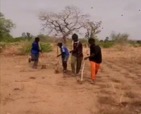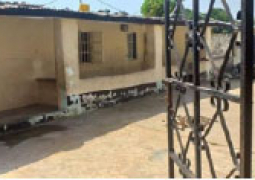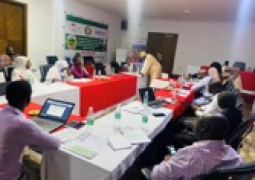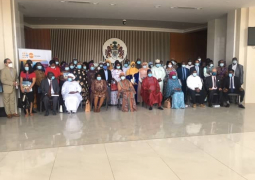
Sedia Ceesay, the first child in a family of 17 from Sami Pachonki village in the Sami District of the Central River Region (CRR) who now lives temporarily with his uncle in Abuko, described climate change as a contributing factor for his leaving the village for the urban centre.
"With this climate problem, my family's farm produce is not as it used to be, and therefore this prompted me to leave for the urban centre," he said, adding he is now working as a part time construction worker.
According to research, mass movement of people from rural to urban centres also comes with a lot of negative effects. These include an increase in the ratio of crime rates, prostitution, overcrowding, traffic congestion, high dependency ratio, job scarcity, low agricultural produce among others.
Nfansu Darboe, 36, who lives in Kiang Kwinella, and has been farming for over 15 years, said rural farming is losing its shape and this might slowly lead to the fall of Gambian agriculture.
“The youth are expected to take over the agricultural sector most especially in the rural farms because those ones account more in the farming sector. But unfortunately the farms are losing their manpower as the energetic youth who should make it work are all leaving for the Kombo’s (urban centres) and I cannot afford machines that can do some of these works,” Mr. Darboe said.
Agriculture can help reduce poverty, raise incomes and improve food security for 80% of the world's poor who live in rural areas and work mainly in farming.
Research has shown that the Gambian economy relies upon agriculture, tourism and remittances.
Poverty and food insecurity are widespread and nearly half its estimated 2 million people live in poverty. Forty percent of inhabitants live in rural areas where 73.9 percent live below the poverty line even though most of agricultural production is centered in rural Gambia.
Over 60 percent of Gambians depend on farming for their livelihood. Farmers and agricultural workers especially women and young people form a large part of the poor and extremely poor.
Ansumana Camara, a native of Kiang Kaif, said migration has affected farm work in their communities. On the other hand, they are happy that the young people are traveling as they are sending remittances to their families and engaging in village development activities.
“Majority of our energetic people is either in the Kombo’s or outside the country and they are contributing to the development of our community. They have contributed to bringing street lights within the community and improved the livelihood of their families,” he said.
Nyang Njie, an economist, said the country’s economy hugely depends on agriculture for its sustainability especially rural agriculture as it accounts for more harvests.
“In terms of food chain, supply and export, most of what we eat comes from rural Gambia. The rural-urban migration has led to decrease in production and thus the country’s economy automatically gets affected because cash crops have been going down both in terms of tonnage and quality."
"This translates to poor export figures and that translates to less income gained,” Mr. Njie said
Mr. Njie added that The Gambia would only develop if the agricultural sector is prosperous and productive as it would export whereby the country earns foreign exchange from it and equally be a supplier to the food chain.
According to Ebrima Ceesay, a social commentator, if the rural areas are developed with recreational centers, it could help curb the increase in rural-urban migration and make the agricultural sector regain its lost glory.
“Development entails the accessibility of good road networks, safe and clean drinking water, quality education, electricity, decent housing, improved health facilities and overall improved living standards. If these things are available in rural communities, one will not have a reason to travel to the urban areas and the energetic ones can go back to the lands while they are working part time elsewhere without leaving the rural areas,” he opined.
There has always been a huge development gap between rural and urban areas. Rural communities account for 42.2 percent of the country’s population but hold 60 percent of its poor, research has shown.
Most of these people rely solely on farm productivity for sustainable livelihood. Even though climate uncertainty and the rapid loss in manpower to migration is downplaying agricultural growth, the rest that stay back still need the farm to prevent starvation.
Read Other Articles In Headlines





